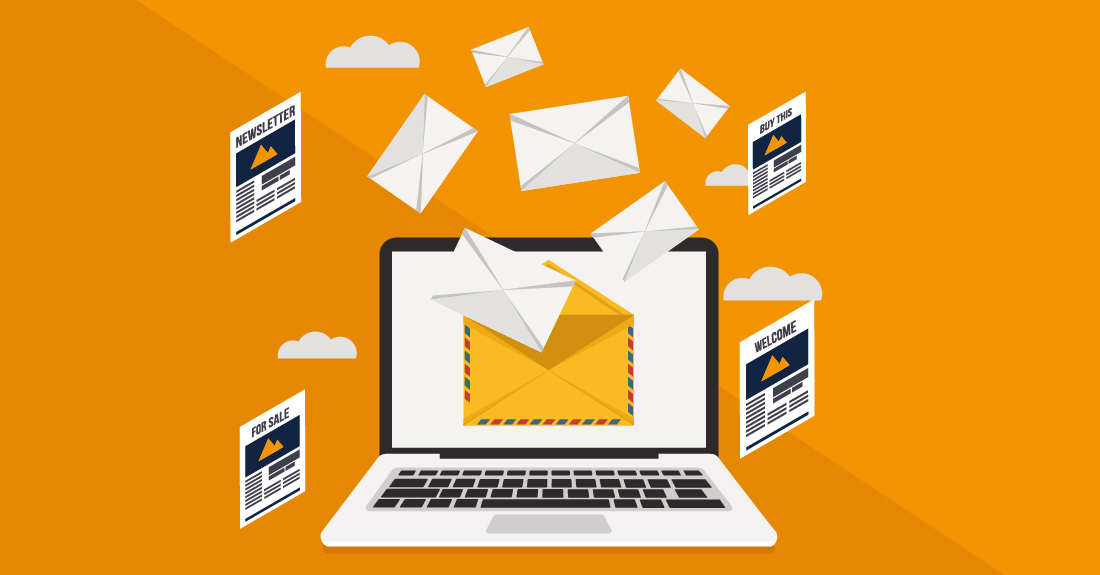The Internet of Things (IoT) has become a highly anticipated and disruptive force in our current economy, changing the playing field for everyone. IoT systems are everywhere, and they’re getting there faster than anyone can keep up with.
The combination of IoT and low-code development represents a perfect storm of opportunity. When combined with automation, this offers businesses a chance to improve their bottom lines while cutting costs and time significantly. Let’s take a look at the different industries where low-code automation could be used to achieve competitive advantage:

Low Code Automation in Marketing
B2B Marketing
Marketing to businesses that do not use the Internet is a different animal. Traditional marketing channels, even with the best tools, are subject to lag and inconsistency. Consumers are not always on the same page about what products or services are available to them. Some may not even be aware there is a choice.
A low-code automation solution to this problem has the potential to turn lost leads into a customer, saving both time and money. If a customer calls to ask why they aren’t receiving the promotional offers they’ve been promised, a low-code automation solution could be used to automatically redirect the customer to the right person, saving both time and money.
In this case, a company uses low-code automation to collect information, store it and then send it to the right place at the right time, automatically. This process is called machine learning, and it is at the heart of many IoT systems.
B2C Marketing
At the heart of every marketing campaign is a strategy. But how do you create a strategy that encompasses all the different types of marketing you do, including low-code automation? While traditional marketing channels are perfectly suited for the old way of doing things, a low-code automation solution has the potential to completely change the way marketing is done. Here are a few examples:
Consumer Goods
Automating household chores has become a thing, as companies like Daqri, Upgraded, and Mio want to make sure every household has access to advanced sensors and software to improve their quality of life. This includes a wide range of automation projects from controlling lights and appliances to tracking workouts, medical conditions, and more.
Healthcare & Life Science
Any hospital or doctor’s office will appreciate the advantages of low-code automation. From scheduling medical appointments to tracking patient metrics, low-code automation can help reduce costs and increase convenience for both patients and providers. This includes adding functionality such as real-time text alerts when a patient is about to be seen by a doctor, automatically sending the patient paperwork upon request, and more.
Manufacturing
Manufacturers have always tried to lower costs through automation, but with the potential of the IoT to disrupt almost every aspect of our current business model, it’s important to have a strategy in place that anticipates this. Low-code automation helps manufacturers maintain their competitive advantage with the potential to increase revenue by up to 50%.
Real Estate
If you’re like most real estate developers, you’re familiar with the challenges of getting your messages across to your customers. From marketing to sales, every aspect of your business needs to work together to get your listing ready for inspection. Automation has the potential to completely transform this process, saving both time and money.
Packaging and Lidar
Lidar, or lidar, is a technique that uses a laser to detect distance and elevation using a bird’s eye view, a four-wheeled vehicle mounted with a camera and laser range finder. Lidar gives sensors the ability to detect obstacles such as walls and roofs, allowing for indoor navigation and mapping. It’s ideal for use in warehouse automation due to its ability to locate and identify objects to improve efficiency.
Retail Industry
Retailers that use low code automation have found that employees are more productive when they follow a consistent workflow. That means that when employees use consistent tools and techniques, they’re more likely to complete their tasks as planned. When employees don’t feel like they’re making any mistakes, they can focus more on the task at hand and less on their surroundings.
Food Industry
Low-code automation can also help the food industry by making the production process more efficient. For example, you can use low-code automation to make sure that vegetables are properly washed and drained. And since vegetables are low in calories, you don’t have to spend as much money on them.
You can also use low-code automation to make sure that proteins are properly cooked. With low code automation, you can also micromanage the temperature of your food. You can set specific monitoring devices to track the level of doneness and even open the door to temperature-specific cooking techniques.
Banking Industry
Low code automation is also useful in the financial sector. With proper implementation, you can reduce expenses and increase efficiency by automating the following:
Accounting
When your team understands how their expenses are being calculated and bills are being paid, they can start to spend less time figuring out why various tasks are taking longer than expected.
Lending
When your team understands how loan processes work, they can reduce the number of paper trails and inefficient processes that they use to approve loan requests.
Do The Regulators Use Low Code Automation?
The FDA has been working with IoT manufacturers to issue guidance on the development of low-code systems. In addition, the Chinese government has requirements for IoT systems that are at least as stringent as those in the U.S. and Europe.
The ability for companies to obtain regulatory approval for every new IoT product or service could make or break them. Moreover, understanding how regulatory agencies in different countries view IoT systems could help companies navigate regulatory challenges.
Strategy and Predictions
The market for IoT and low-code automation is extremely promising. The sooner companies realize this, the better their chances of success. Here are some of the major trends that companies should keep an eye on New businesses will drive the market for IoT and low-code automation solutions in the short term.
The more established industries are going to have to get on the bandwagon to keep up with the new technologies. Competition between companies will heat up in the coming months as each races to be the first to market with their new technologies. As more and more industries adopt low-code automation, we’ll see more examples of how it can be used as a competitive advantage.
Tips for Maximizing Low Code Automation
The best-in-class IoT systems are capable of performing multiple functions, including but not limited to the following:
- Communication – IoT systems communicate with other systems, such as the cloud, smartphones, and computer software.
- Data storage – IoT systems store data, such as a sensor’s readout and sensor data, on a device’s local storage or a remote server.
- Data analysis – IoT systems analyze data and generate reports, such as a system that can monitor equipment efficiency and generate a report on the amount of energy used by equipment.
- Decision-making – IoT systems make decisions, such as a smart energy sensor that can automatically switch energy providers.
Zapier Low Code Automation Tool
Zapier is a communication platform that allows developers to link any application or service with any other app or service. It lets developers create simple, client-side integrations that allow for data capture, analysis, and reporting.
Given this, it’s no surprise that Zapier is the de facto standard for IoT integrations. Companies that are looking to maximize the potential of low-code automation should consider using Zapier to connect their systems.
Bottom Line
Many industries are seeing the massive impact of the Internet of Things, and low-code automation is a critical part of this. With the added benefit of regulatory approval, low-code IoT systems provide a good balance of flexibility and security.
Articles You Might Want To Read:
What to Know About Low Code Automation?







Leave A Comment